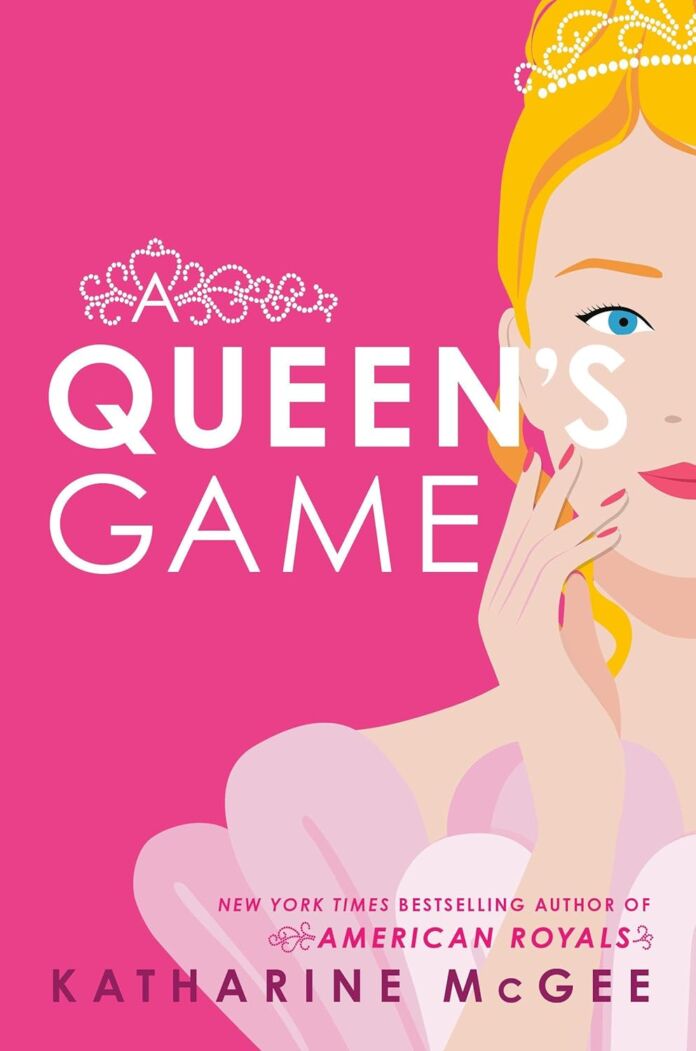In her latest novel, A Queen’s Game, Katharine McGee proves once again why she’s a master of royal fiction, seamlessly transitioning from her modern American Royals series to the intricate world of Victorian Europe. This richly detailed historical romance weaves together the lives of three remarkable princesses whose paths intersect during a pivotal moment in European history. While the novel occasionally stumbles in its pacing, McGee’s talent for creating compelling characters and complex relationships shines through, making this an engrossing read for both historical fiction enthusiasts and romance lovers.
The Story: A Royal Love Triangle… or Square?
Set against the opulent backdrop of late Victorian Europe, A Queen’s Game follows three young women navigating the treacherous waters of royal romance:
- Alix of Hesse: Queen Victoria’s beloved granddaughter, torn between duty and her growing feelings for the Russian Tsarevich Nicholas
- Hélène d’Orléans: The spirited French exile princess who captures the heart of Britain’s heir, Prince Eddy
- May of Teck: A determined young woman on society’s margins who sets her sights on the British throne
The novel expertly alternates between these three perspectives, creating a rich tapestry of intersecting lives and competing desires. McGee’s decision to structure the narrative this way allows readers to deeply understand each princess’s motivations and struggles, while maintaining narrative tension throughout.
Strengths: Where the Novel Truly Shines
Historical Accuracy with a Modern Lens
One of the book’s greatest strengths is McGee’s ability to blend historical accuracy with contemporary sensibilities. While remaining true to the Victorian era’s social constraints and expectations, she gives her female characters agency and depth that makes them relatable to modern readers. The author’s extensive research is evident in the small details – from the elaborate description of court protocols to the authentic portrayal of Victorian fashion and etiquette.
Character Development
McGee excels at creating complex, flawed characters who grow throughout the story. Particularly impressive is her portrayal of:
- Hélène’s journey from rebellious princess to a woman willing to sacrifice everything for love
- Alix’s struggle with anxiety and guilt, stemming from a childhood tragedy
- May’s transformation from a desperate social climber to someone capable of genuine friendship
Writing Style and Atmosphere
McGee’s prose strikes an excellent balance between accessibility and period authenticity. She creates a vivid sense of time and place without getting bogged down in excessive historical detail. The dialogue feels natural while maintaining period appropriate formality, and her descriptions of grand balls, royal ceremonies, and intimate moments are equally engaging.
Areas for Improvement
Pacing Issues
The novel’s middle section occasionally drags, particularly during the extended sequences at Balmoral. While these scenes are important for character development, they could have been tightened without losing their impact.
Secondary Character Development
While the main characters are well-drawn, some secondary characters, particularly the male leads like Prince George and the Tsarevich, could have been more fully developed. Their motivations sometimes feel opaque, making it harder to invest in certain romantic relationships.
Historical Context and Authenticity
McGee’s author’s note reveals the fascinating true history behind her story, and her attention to historical detail is commendable. The political tensions, social expectations, and family dynamics of the Victorian era are woven naturally into the narrative without feeling like history lessons.
Themes and Deeper Meanings
The novel explores several compelling themes:
- The tension between duty and personal desire
- The price of power and position
- Female friendship and rivalry in a patriarchal society
- The impact of childhood trauma on adult relationships
Target Audience and Appeal
While marketed as Young Adult, A Queen’s Game has crossover appeal for adult readers who enjoy:
- Historical fiction with romantic elements
- Royal court intrigue
- Character-driven narratives
- Victorian era settings
Comparison to Other Works
Fans of McGee’s American Royals series will find similar themes of romance and royal intrigue here, though with a more historically grounded approach. The novel also bears comparison to Daisy Goodwin’s Victoria and Julia Quinn’s Bridgerton series, though with its own unique perspective on the Victorian era.
Final Verdict
A Queen’s Game is an ambitious and largely successful blend of historical fact and romantic fiction. While not perfect, it offers:
Strengths:
- Rich historical detail
- Complex female characters
- Engaging romantic plotlines
- Well-researched setting
Weaknesses:
- Occasional pacing issues
- Some underdeveloped secondary characters
- A few plot threads that feel unresolved
Conclusion
Katharine McGee has crafted an engaging historical romance that will appeal to both YA and adult readers. While the novel has some minor flaws, its strengths far outweigh its weaknesses. The author’s careful attention to historical detail, combined with her gift for creating compelling characters and romantic tension, makes A Queen’s Game a worthy addition to the historical romance genre.
This novel sets up what promises to be an exciting series, leaving readers eager to see how these intertwined royal romances will resolve. McGee has proven she can handle historical fiction with the same skill she brought to her contemporary royal series, making her a voice to watch in both genres.
A Queen’s Game is recommended for readers who enjoy:
- Historical romance with political intrigue
- Strong female protagonists
- Victorian era settings
- Royal court drama
- Well-researched historical fiction
Recommended Reading Order
For those new to Katharine McGee’s work, consider reading:
- American Royals series (for contemporary royal romance)
- The Thousandth Floor trilogy (for futuristic drama)
- A Queen’s Game (for historical royal romance)





